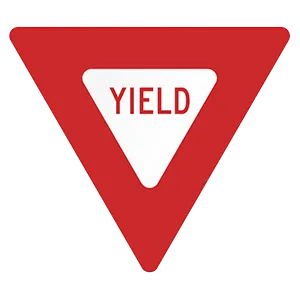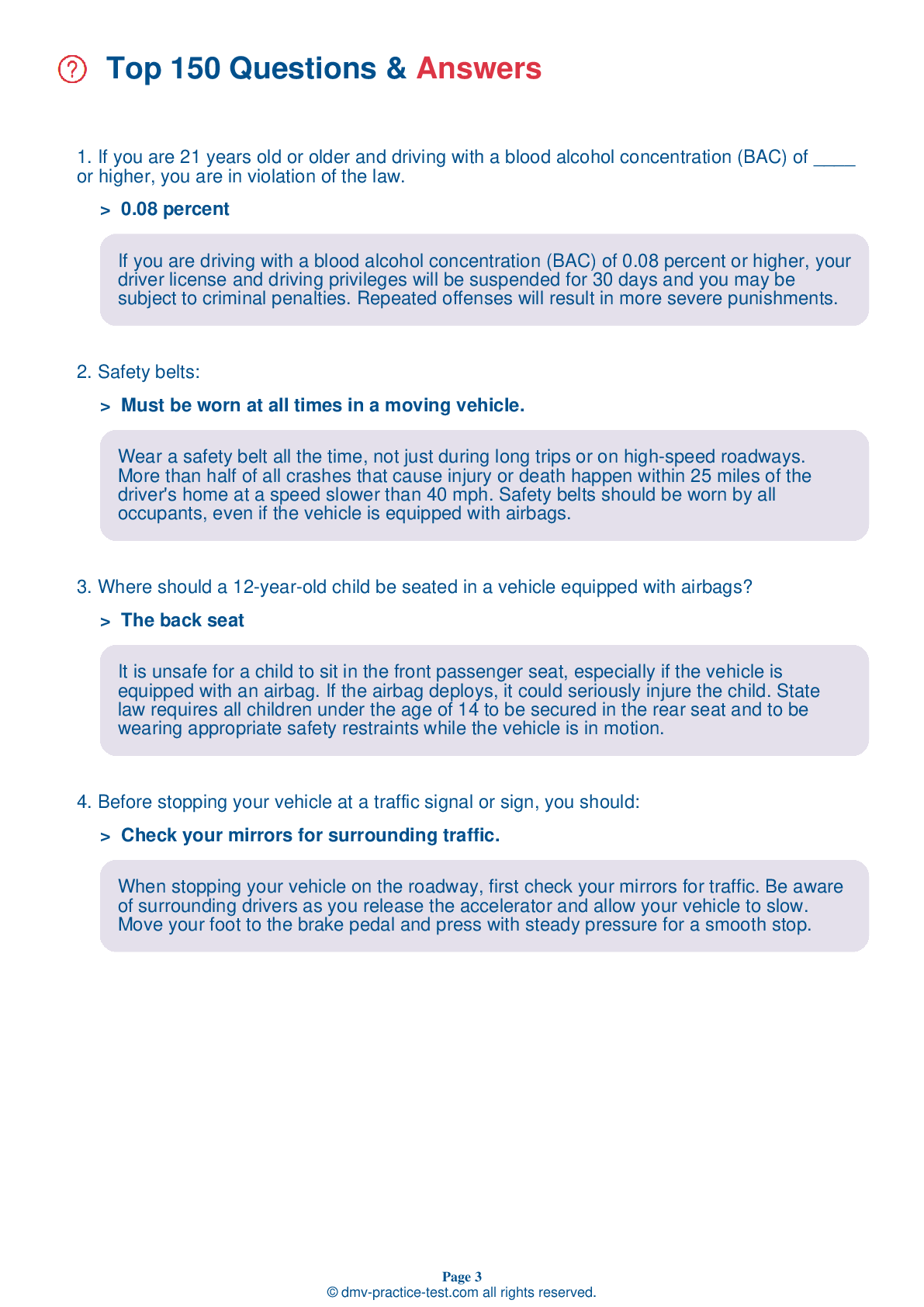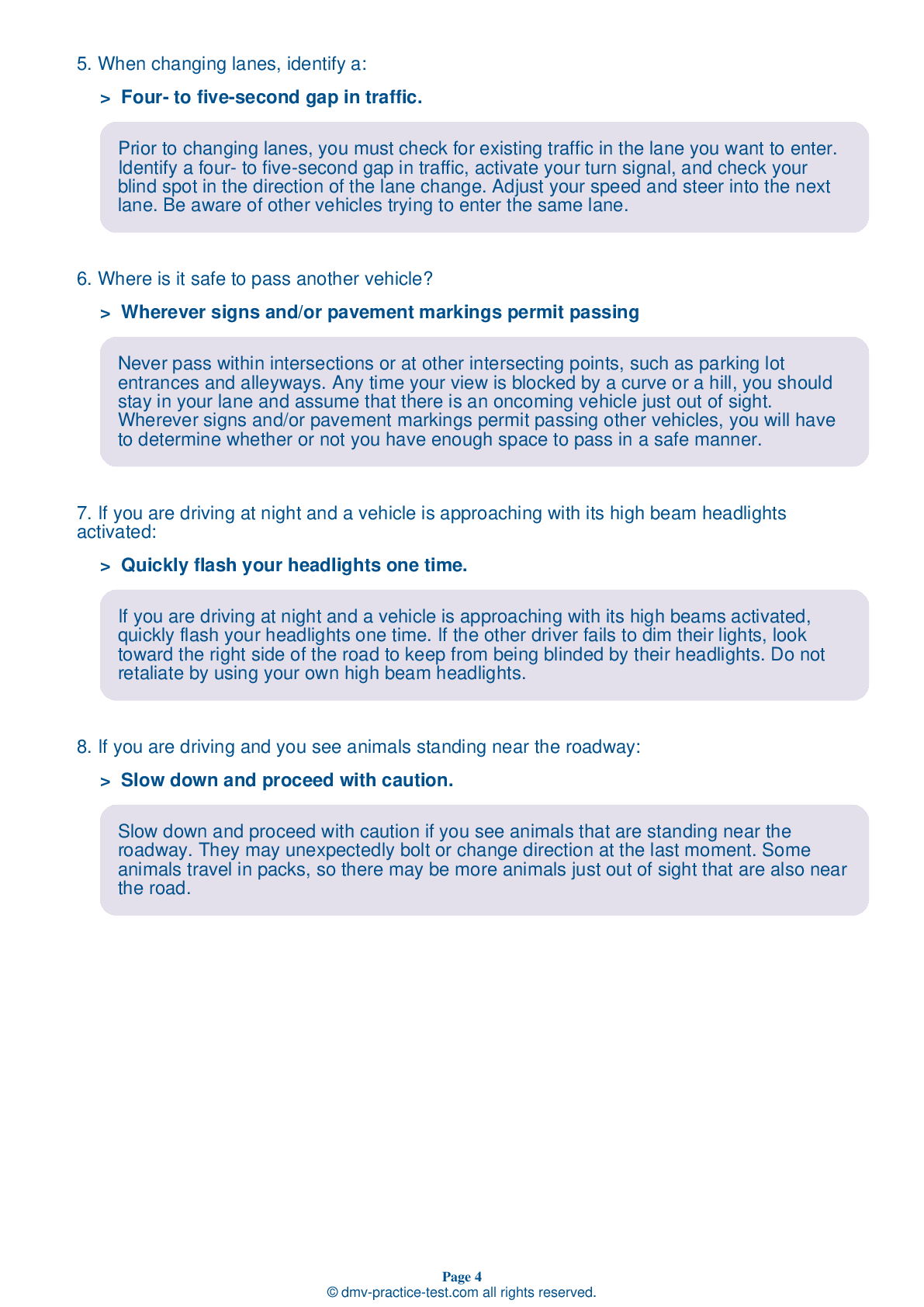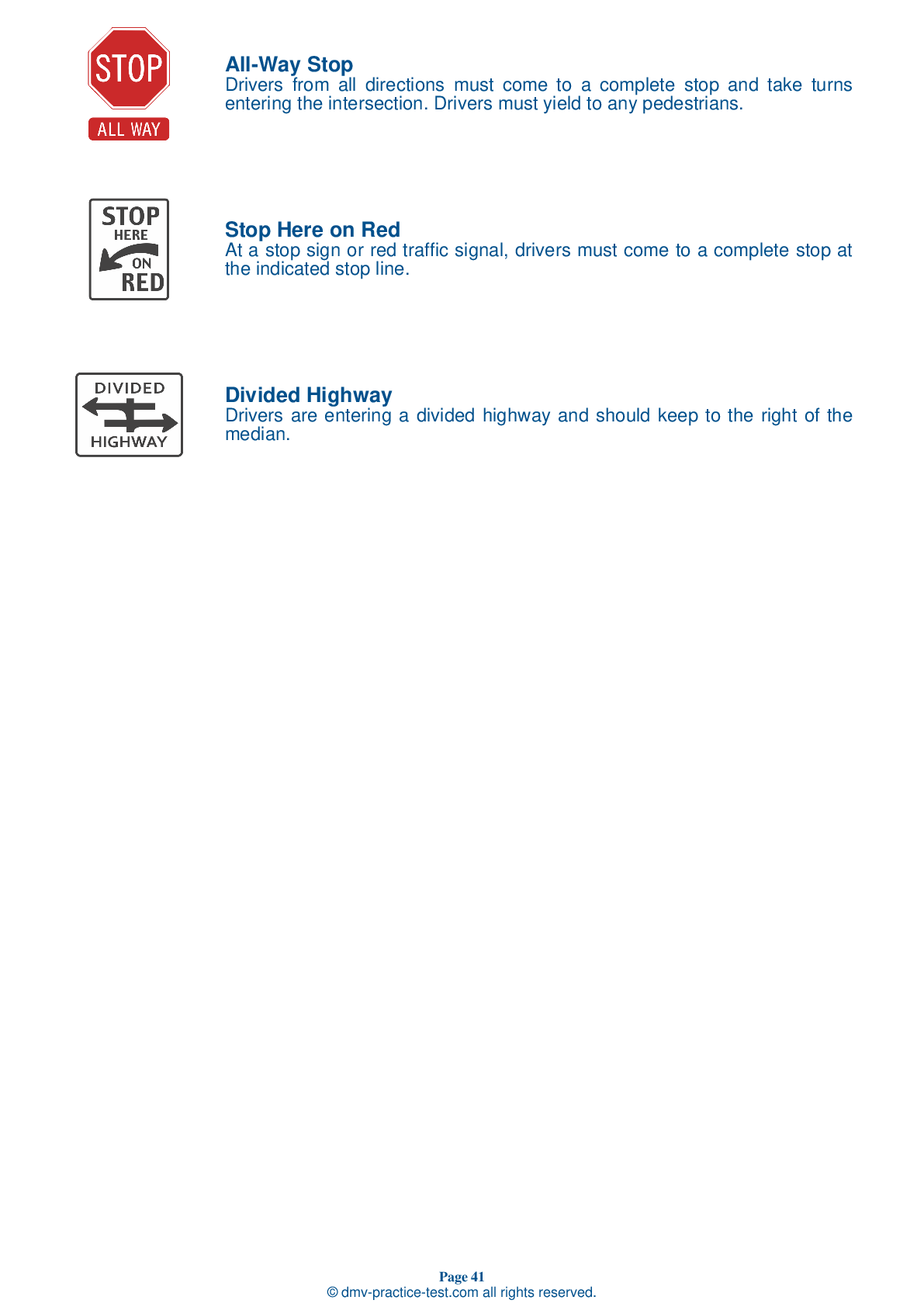FREE Kansas DMV Practice Test #14 Page 3 of 3
In Kansas, the DMV practise tests have been revised for January 2025. It includes questions based on the Kansas Driver Handbook's most essential traffic signals and regulations for 2025. Use actual questions that are very similar (often identical!) to the DMV driving permit test and driver's licence exam to study for the DMV driving permit test and driver's licence exam.
On the practise exam, each question gets a tip and explanation to help you remember the concepts. The written component of the official Kansas DMV test will include questions about traffic rules, traffic signs, and driving statutes, as well as information from the Driver Handbook.
To obtain a passing grade, you must correctly answer 20 of the 25 questions. Take our DMV practise exam to help you prepare for your Kansas instruction permit or driver's licence.
The DMV exam is available in several languages.
Using any kind of testing assistance will result in an automatic fail, and the DMV may take additional action against your driver's licence, so stay away from it.
17 . On a freeway, you should look farther ahead than you would on a city street:
On the freeway, be ready for changes in traffic conditions. Watch for signals from other drivers. Expect merging vehicles at on-ramps and interchanges and be prepared for rapid changes in road conditions and traffic flow.
18 . A school bus is stopped ahead of you in your lane with its red lights flashing. You should:
When a stopped school bus is using its flashing red lights, approaching drivers must stop and remain stopped until the lights stop flashing. If the school bus is on the opposite side of a divided highway, drivers do not need to stop.
19 . If you are feeling fatigued while driving, you should:
When driving, watch for warning signs of fatigue. You are too tired to drive safely if you are struggling to keep your eyes open, drifting from your lane, or turning up the radio and rolling down your windows to keep yourself awake. If you notice these signs, it is a good idea to find a safe place to park so you can refresh yourself with a short nap.
20 . You are required to stop your vehicle:
You must come to a complete stop at a steady or flashing red traffic light. You must always obey instructions given by officers directing traffic, regardless of any posted signs or traffic signals.
21 . Collisions are more likely to happen when:
Collisions are more likely to happen when one driver moves faster or slower than the other vehicles on the road. Driving faster than other traffic increases your chance of being involved in a collision. Driving more slowly than other traffic is also dangerous because it can increase the risk of a rear-end collision with your vehicle or cause other drivers to swerve to avoid hitting you.
22 . You have allowed the wheels of your vehicle to run off the edge of the pavement. What should you do first?
If your vehicle leaves the roadway, hold the steering wheel firmly, release the gas pedal, and gently apply the brakes. Wait until your speed has reduced, check the traffic, and look for a place to safely return to the roadway by merging back into traffic. Overcompensating by jerking the wheel to return to the roadway can cause you to lose control of your vehicle or may cause your car to go into other lanes of traffic.
23 . Backing your vehicle is:
Backing up is always dangerous because it is hard to see behind your vehicle. Use extra caution when backing up.
24 . Before you change lanes, you should check your mirrors and:
Before changing lanes, it is very important to check behind you. You should look over your shoulder to ensure that you are not getting in the way of vehicles in the lane you want to enter. Before changing lanes, you should also ensure that no drivers are attempting to drive into the same spot from a different lane.
25 . This red and white sign means you should:

A three-sided yield sign indicates that you must slow down and be ready to stop, if necessary, to let any vehicle, bicyclist, or pedestrian pass before you proceed. In this case, you do not have the right-of-way.
See the exact questions that will be on the 2025 Kansas DMV exam.
99.2% of people who use the cheat sheet pass the FIRST TIME
LT gives us an insight on how the cheat sheet provided her with all the study questions she needed before taking her test.
Joe initially studied with the handbook and failed his test, he eventually found us online, studied and pass his test the first time around.



